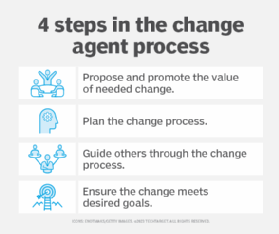early adopter
What is an early adopter?
An early adopter is a person who embraces new technology or tries a new product before most others. Early adopters tend to buy and try out new software or hardware -- or new versions of existing software or hardware -- sooner than many of their peers. They have unique personal characteristics that differentiate them from the rest of the population. They also play an important role in the development and adoption of new innovations, especially in the technology space.
An early adopter is someone who adopts a new innovation before most of the population. By spotlighting the innovation, they lead the way toward wider adoption and help take it into the mainstream. For this reason, they are also known as lighthouse customers.
New innovations tend to be more expensive than existing products. Early adopters are usually willing to pay more for a new product than later adopters for the chance to try out the innovation before others. They willingly accept the premium -- also called the early adopter tax -- if they believe adopting and using the new product offers advantages such as improved efficiency, time savings or a higher social status.
Origin of the early adopter idea
E.M. Rogers in 1962 first proposed the term early adopter in the diffusion of innovations (DOI) theory. It explains how a new idea, behavior or product gains momentum over time and spreads, or diffuses, through a population or social system. Through this diffusion, the people who are part of the social system adopt that new idea, behavior or product.
Per the DOI theory, adoption of the innovation does not happen in a social system all at once. Rather, some people will adopt the innovation before others. These are the early adopters -- a small minority of people in the social system.
Rogers discussed five types of adopter stages. Besides early adopters, the other four adopter categories are as follows:
- Innovators. They are the most daring people in a population and most willing to take risks. That's why they're the first to develop a new idea.
- Early majority. This group includes people who typically adopt new ideas before most of the population, but they do so only after examining evidence that the innovation works.
- Late majority. While resistant to change, they're willing to adopt a new innovation after it's been tried by the majority.
- Laggards. These people are conservative and tradition-bound. They're extremely resistant to change, making them the opposite of early adopters.
Qualities of early adopters
Early adopters differ from the other adopter categories in their willingness to support new ideas, try new things and embrace change. They're not averse to taking risks, and are among the first to adopt and use an innovation and provide feedback about their experience.
Early adopters like to do things others are unwilling to do, either due to fear or skepticism about the product or disdain for any new technology. By taking such risks, they influence the development and enhancement of new technology and often become opinion leaders and social influencers. In those roles, they help others -- followers -- decide whether they'd also like to try the product. Their feedback also can encourage vendors to make product improvements.
Role of early adopters in computing
Early adopters are common in the computer era; they play an important role in the development and adoption of new technologies and products. In some ways, early adoption is a type of testing that occurs in a new product's lifecycle.
Feedback from early adopters often helps vendors or developers identify the weaknesses in their product and refine its features and design. Since early adopters are in a unique position to know how a new technology works, their feedback can help vendors improve their product positioning and get a competitive advantage.
How companies entice early adopters
Early adopters often are willing to try out a new product even if they don't have enough information about it. They can be adventurous and instinctive -- and have a fear of missing out, also called FOMO.

Companies can benefit by adopting proven strategies to appeal to this population and market to them. One strategy is to provide how-to manuals and information sheets to reduce friction during adoption. It's also important to understand who early adopters are and what they are looking for.
Marketers should get to know them better -- say, by interviewing them -- and then provide them with a product they can easily adopt and use right away. It's also a good idea to tell a compelling story with the new product to entice early adopters and encourage them to try it.
Early adopters vs. laggards
Early adopters and innovators have counterparts at the opposite end of the spectrum. These counterparts are known as laggards and Luddites.
Laggards are slow or reluctant to embrace new technology, usually because of disinterest or financial constraints. Luddites are also skeptical of change and new innovations. However, their skepticism stems from an active fear or loathing of new technology, especially if they believe the technology could threaten their way of living or existing jobs.
See how early adopters of technology belong in every organization.







